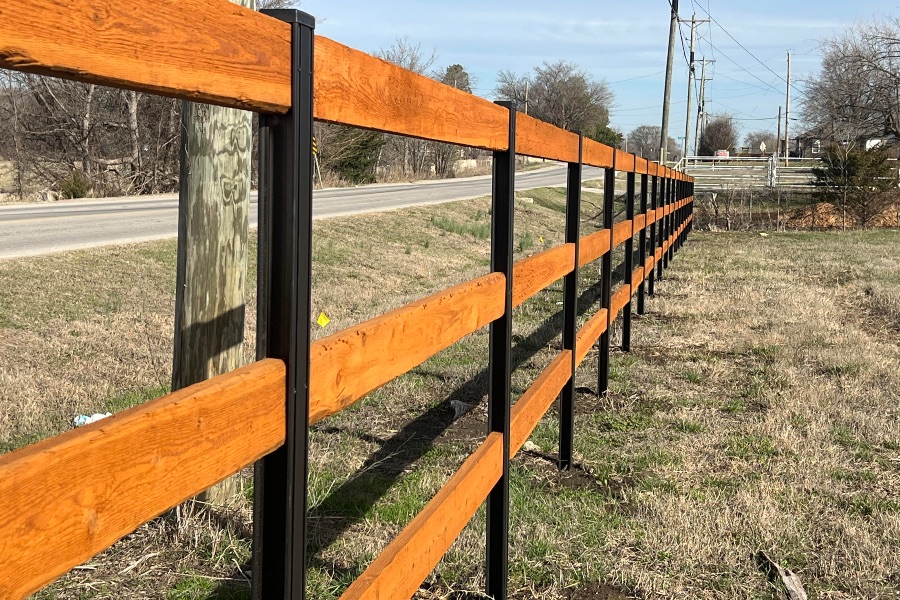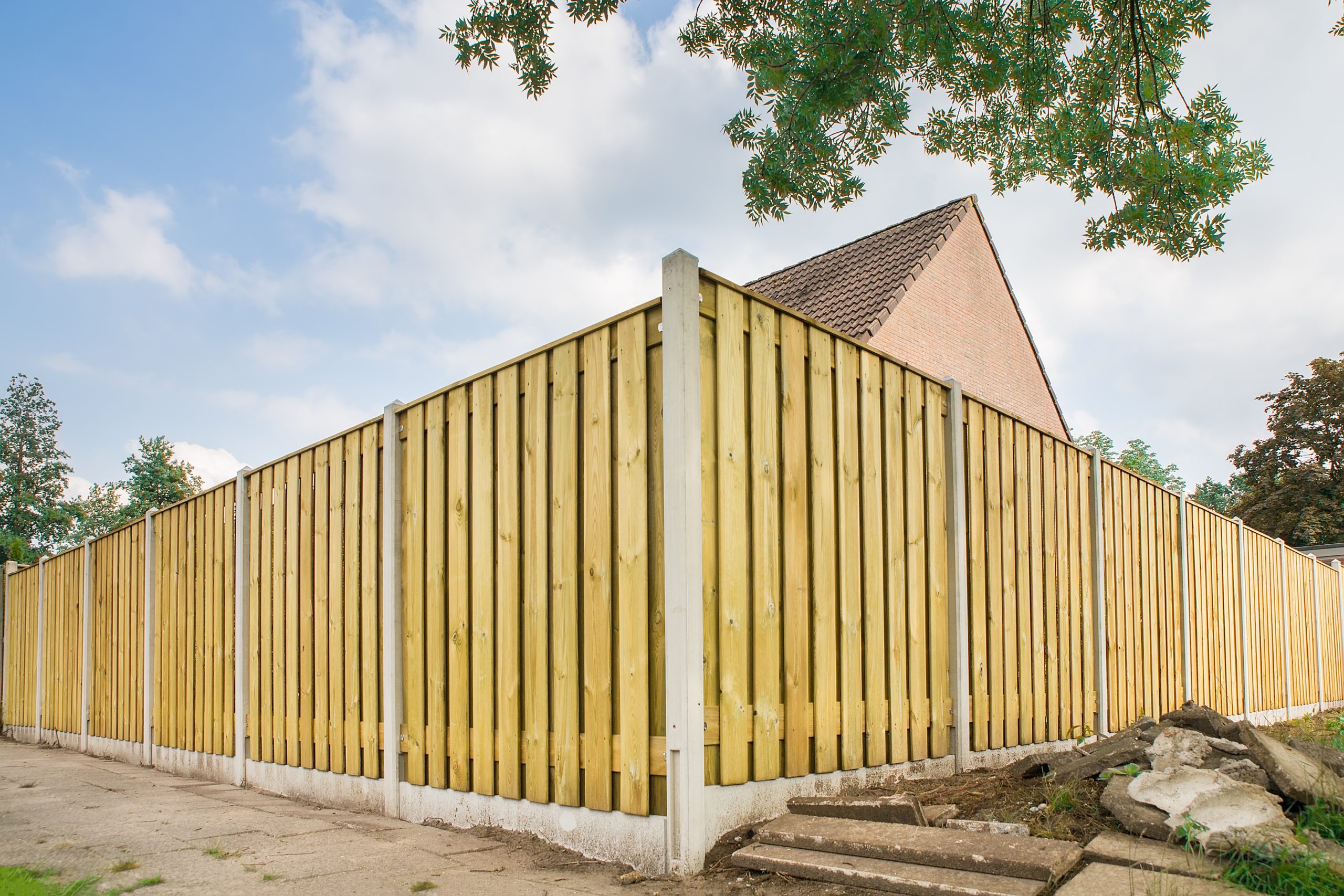All Categories
Featured

As sustainability ends up being an expanding priority for home owners and organizations, the need for green building materials includes outside areas, including fences. Traditional fence materials such as wood, metal, and plastic can have substantial ecological impacts, from logging to chemical therapies and plastic waste. Nevertheless, there are numerous environmentally friendly fence choices offered that not only lower the carbon impact yet likewise use sturdiness and aesthetic allure. Let's explore several of one of the most lasting and prominent secure fencing materials that can assist you go environment-friendly while still boosting your building's design, safety, and personal privacy.
- Bamboo Fencing. Bamboo is one of the most sustainable products on the market, and it is progressively utilized in fence building and construction as a result of its quick development and strength. Unlike hardwood trees, bamboo is a turf that can expand back completely within simply a couple of years, making it highly renewable. It's normally resistant to parasites and rot, which indicates it does not call for severe chemicals or therapies, making it an environmentally friendly choice.

Benefits: Bamboo fencings are long lasting, low-maintenance, and eco-friendly. They are normally immune to termites and dampness, lowering the need for chemical preservatives. Additionally, bamboo helps decrease dirt erosion as a result of its deep root systems. Considerations: Bamboo can be a lot more expensive than some conventional wood fencing options, and it may not be ideal for areas with extreme chilly or freezing temperatures, as it can become brittle gradually. 2. Recycled Products Secure Fencing. Several manufacturers now offer fences made from post-consumer plastic, recycled timber, or even repurposed steel. Many composite products, for example, are made from recycled plastic containers, wood scraps, and various other products that would certainly or else be discarded.
Benefits: Recycled material fences aid save natural deposits, minimize air pollution, and lower the environmental effect of the manufacturing procedure. They can likewise supply outstanding toughness, resisting degeneration, mold and mildew, and termites. Considerations: While recycled material fences are environment-friendly and very durable, they may not have the exact same all-natural aesthetic that some homeowners look for. Nevertheless, producers now supply styles that mimic the look of timber or stone. 3. Compound Fence. Composite secure fencing is made from a mix of wood fibers and plastic, typically including recycled materials. This mix produces a highly durable, low-maintenance fence that does not require normal painting or discoloration, making it a sustainable alternative. Composite fencings are immune to rot, bugs, and weathering, which implies they can last for years without the demand for frequent replacements.

Benefits: Composite fences are long-lasting and can stand up to severe climate conditions, decreasing the demand for substitutes or repair services. Since composite materials often include recycled content, they help decrease plastic waste. Additionally, they do not need damaging chemicals or therapies. Factors to consider: Composite fencings can have a greater ahead of time expense than standard wood or plastic, though their toughness and minimized upkeep expenses typically make them a much more affordable alternative in the lengthy run. 4. Living Fences. Living fences, additionally referred to as hedgerows, are an environmentally friendly and visually pleasing alternative that entails planting dense shrubs, trees, or climbing plants along your home line to create a natural obstacle. Popular plants for living fences consist of boxwood, privet, and holly. These plants can be expanded to give personal privacy, windbreaks, and sound decrease while adding to environmental health.
Conveniences: Living fences promote biodiversity, enhance air high quality, and soak up carbon dioxide, making them among the most environmentally friendly fence options. They likewise offer an all-natural environment for birds and insects and can decrease sound pollution and aid regulate temperatures in your yard. Factors to consider: Living fencings call for routine upkeep, such as cutting, watering, and sometimes pest control. They likewise take time to establish and might not give immediate privacy contrasted to strong timber or plastic fencings. 5. Cedar and Redwood Fence. Cedar and redwood are prominent natural timber choices for fencings. These materials are normally resistant and resilient to rot, bugs, and wetness, which means they normally don't require the usage of dangerous chemical therapies. When sourced from sustainably managed woodlands, cedar and redwood fences can be an eco pleasant selection that offers both appeal and long life.
Conveniences: These timbers are eco-friendly, eco-friendly, and offer superb resilience and natural charm. Cedar and redwood likewise have a reduced ecological influence when gathered sensibly, making them an environmentally friendly selection for several house owners. Considerations: While cedar and redwood fencings have environmental benefits, they do still require periodic upkeep and are a lot more expensive than other timber alternatives. It is essential to guarantee that the timber is sourced from sustainable woodlands to maximize its environmental advantages. 6. Rock and Block Fencing (Reclaimed) Stone and block fences are low-maintenance and incredibly resilient, and they can be green when made from redeemed products. Redeemed stone and brick are usually restored from old structures or building and construction projects, minimizing waste and preserving natural deposits. These products supply a classic look and are highly resistant to weathering, making them a resilient remedy for fencing.
Benefits: Redeemed rock and block are resilient, cosmetically pleasing, and need very little maintenance. By repurposing these materials, you aid lower the need for new resources and reduce waste in garbage dumps. Considerations: The installment of rock and block fencings can be labor-intensive and much more expensive contrasted to various other products, but their longevity and reduced upkeep demands can make them cost-efficient in the future. Final thought. Eco-friendly fencing options are not only helpful for the setting yet additionally use resilience, low upkeep, and visual allure. Whether you choose bamboo, recycled materials, composite secure fencing, living fencings, or sustainable timber like cedar and redwood, there are lots of ways to decrease your ecological impact while improving your property's appearance. By choosing these eco-conscious products, you can add to a healthier earth and create an outdoor space that shows your values.
Latest Posts
Check Out the Greatest Auto Repair Coupons in Montclare, Chicago
Published May 24, 25
1 min read
Discover Reduce Expenses on Car Maintenance with Montclare Auto Repair’s Exclusive Deals
Published May 24, 25
1 min read
How Regular Car Maintenance at Montclare Auto Repair Saves You Money
Published May 24, 25
1 min read
More
Latest Posts
Check Out the Greatest Auto Repair Coupons in Montclare, Chicago
Published May 24, 25
1 min read
Discover Reduce Expenses on Car Maintenance with Montclare Auto Repair’s Exclusive Deals
Published May 24, 25
1 min read
How Regular Car Maintenance at Montclare Auto Repair Saves You Money
Published May 24, 25
1 min read